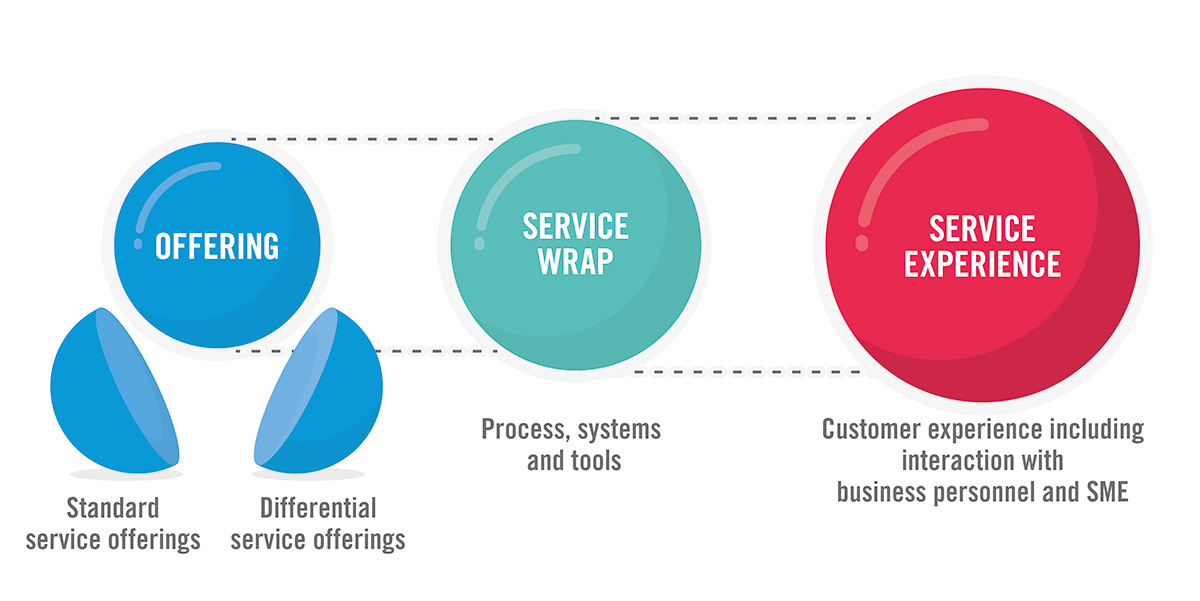Just before the second session of the day at a tech event, I was cornered in the nicest possible way to be asked a profound question. “We’re a start-up, we’ve got some great technology, but to grow we feel we need to get some digital services – how do we do it?”
Wow. Right away the fundamental nature of the question knocked me sideways. Much of my career has been devoted to developing and launching new digital services. This outside perspective, from someone keen to create one afresh, really made me think. I imagined their mindset… “digital services must be easy, there’s no magic in the Uber ride service or the simplicity of the Just Eat concept, we simply need to find the secret sauce to create our service model and this guy will know how.”
Well thinking about it I guess I do – but the sauce takes some careful mixing. In the telco and IT worlds many of the service models are standard and established. Think airtime contracts in telco, Software as a Service in IT. But there is huge untapped opportunity in many other industries where companies have yet to determine what their service offering might be. Here’s my step-by-step guide.
Remember the taste test
The place to start is understanding the complete goal of the end users. It compels us to determine a response that meets that goal. This is all about the service offering being delivered through the service model or service wrap. Throughout the formulation you keep the end user in mind – it’s the taste test if you like – and the sauce is only right when the goal is satisfied.
Three main ingredients
The main ingredients of the service are the outer service experience, the service wrap within it and finally the core business offering. The service experience is the contract the end user has with the people in the business, the digital interfaces and the overall utility of the service. Most companies are of course well-tuned to the importance of customer experience, and across all the things they need to get right if they are to delight their audience.
The service wrap comprises the processes, systems and tools needed to make it all work. Then comes the core – the key offering, the business rationale and the crucial functions the service provides. The service offering can be further split by what is standard and common to many organisations and what is differentiating. That’s the essence of the secret sauce.
This approach of breaking down the ingredients allows us to identify aspects which are relatively easy, and which follow logically on from one to another. Then we can home in on the more challenging, unique elements that require subject matter expertise and industry insight to really get to grips with nailing a differentiated offering.
If the secret sauce is the differentiating service offering, then here’s a good example. In internet shopping, a standard service offering could be to schedule the delivery of groceries. A differentiated offering could be a service which knows your lifestyle and predicts and delivers your required groceries just in time.

The main point to remember here is that working out what your digital service should be is a whole lot easier when you focus on the differentiated service offering.
Service model recipes
There are many established service models that can be called upon to deliver the service offering to the end user. Just like recipes, they can be played with and modified. The status and nature of the business will determine which of the following is the most appropriate.
The ‘platform’ is one of the strongest concepts in digital services and operates on two levels. Firstly, it is the facility to match and interchange providers and consumers. The end users consume from the platform the information, the functionality and the support they need. To locate and pay for a ride share, for example. The providers are the resources, the content and the data. The available drivers, the location and the map, for example. The ideal is to achieve a virtuous circle of platform economics where more providers attract more consumers and more consumers attract more providers. The second aspect of the platform is a technical capability providing the API, the cloud hosting, that allows the platform to scale and provide availability.

‘Product plus’ is the transformation that established businesses can make when moving from physical asset-based selling to users. Instead the same end utility is received via a subscription basis to the same physical asset. Here’s an example to illustrate it. The car tyre is a well-established, almost utility item. But pressure sensors can now be buried into the rubber tread and connected to a smart hub which links each tyre to a software platform.
The connected tyre will now give real time status of the tread wear, the spread between the tyres and the health of the sidewall. This leads to predictive maintenance and replacement of the “you will need new rear tyres by June” variety. Tread wear indicates driving style, so the driver can be advised to adapt it to benefit the environment or improve the passenger experience. Information on local weather patterns could inform suggestions for more appropriate tyre types.
‘X-as-a-Service’ is one of the most far-reaching recipes. Its origin is very traditional. Essentially, you don’t have to buy a product because you can rent or lease it. This used to be the case with televisions and still is for cars. When Cloud computing came along, a hosted shared application could be accessed via the internet and we had Software-as-a-Service or Platform-as-a-Service. But since we now have connected devices with smart sensors, we can measure the consumption of value in physical things. How much luminesce a light fitting has provided, for example, or how much fertiliser a farming robot has spread. Which means we can charge for actual value rather than just timed-based ownership.
Let’s now spice up the recipes a little by applying variations to the ones we’ve covered so far. Personalization is a common feature of many service models. We increase the value and stickiness of the services by allowing the user to customise and change the facility to match their preferences. Providing different degrees of personalization also leads to different payment tiers – providing greater control and flexibility at a higher price.
The platform recipe is further enhanced and becomes more valuable and powerful as we consider digital ecosystems. This is where we roll in other parties as providers and consumers of services. Low-cost airlines have nailed this by offering access to hire cars and hotels at the passenger destinations. Super retail providers such as Tencent have done it via acquisition, but it can also be achieved by partner networks. One of the aspects of success here is setting out a platform that can readily integrate the partner providers into the service delivery. This highlights the crucial importance of APIs.
The trendiest service model recipes right now go well beyond simply delivering a service and are all about experience. It’s not enough to meet the end user’s goal – it has to be a memorable event. Say an insurance broker sets out to provide a service to find the lowest insurance quote. The service could be transformed by a digital experience that turns the search into a game. The questions and checks could become challenges as the adventure culminates in a final quest to actually set up the policy!
Service model to service wrap
So we’ve identified the right recipes for the sauce, and the right mix for the service models. Now it’s time to specify what tools and process need to be developed to deliver the service. We’re in a much better place than we were when the original question – “what should the service offering be?” – was being asked. Getting the specification right is still crucial as it will affect the cost. But engineering to a spec is much more straightforward and effective than engineering to original ideation.
Nearly all services these days are likely to be smart thanks to the inclusion of Artificial Intelligence (AI) and Machine Learning (ML). Iteration is the key to success here. We need to iterate on the delivery, react to what the user prefers and then learn and grow the service. In the world of consumer products, this is nothing new.
Global brands have successfully evolved with a process of manual customer feedback, focus groups, analysis of support and complaints. The difference today is that the feedback loop of learning is being automated. Not only that but it is quicker, and we can incorporate the learning into the personalization. Crucially, the means the service doesn’t just get better on average but gets improves for the individual.
A solution that scales and grows
At Cambridge Consultants, we’ve helped many clients create their own secret sauces. A great example is our work alongside Ocado to revolutionise internet grocery delivery. If it’s an area that interests you, I’d be happy to talk throughout Service Design Toolkit, which helps you to find, capture and filter ideas. It drives the design and service model before ideas are shaped and sharpened by prototyping and our unique combination of science and engineering. This leads to vital decisions about choosing the right technologies and vendors to develop a solution that can scale, grow, and transform business.




